Dolmades (Ντολμάδες)
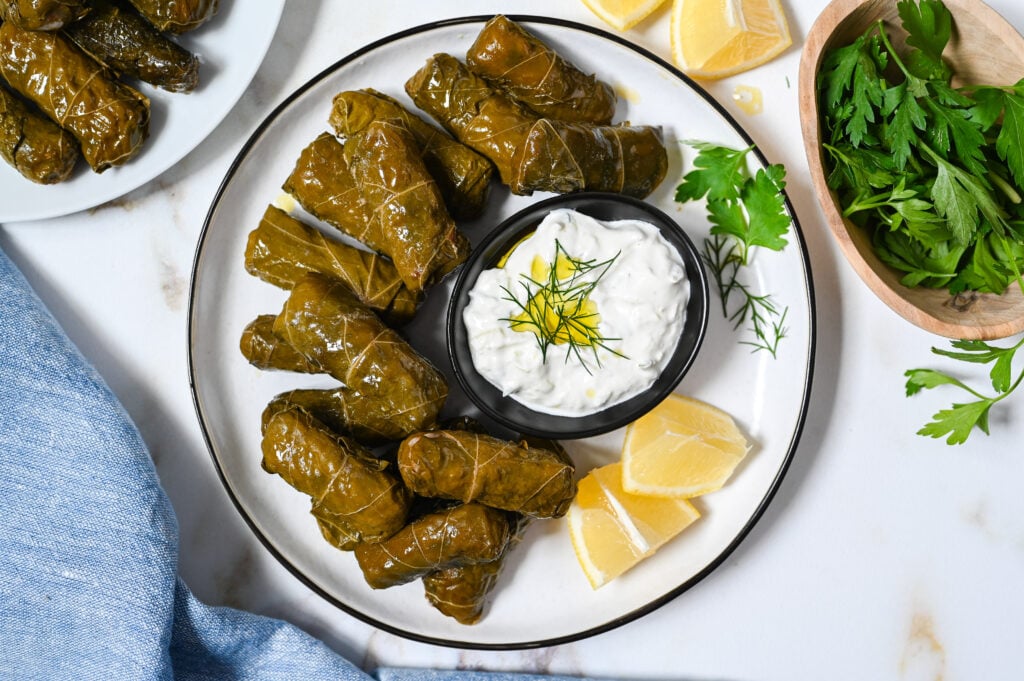
Vine leaves stuffed with rice and herbs. A Greek specialty!
We love things that are wrapped. Presents, mummys (Come on! They are fascinating!) and especially, dolmades, a mixture of rice and herbs wrapped in vine or grape leaves. Greek dolmades are perfectly delightful treats often served as mezedes, but which can easily find their way onto a lunch or dinner plate.
When we were little, we remember sitting with our parents at the kitchen table, watching them with fascination as they so deftly used the vine leaves they had picked, to wrap up the delicious filling. They would encourage us to have a go and, regardless of how badly our inexperienced and clumsy little fingers wrapped the dolmades, we were told that they were perfect. When the dolmades came out of the pot, and several of our poorly wrapped ones had opened, causing their filling to spill out, our parents would take complete ownership of them. They would feign frustration and disappointment, and criticize themselves for not knowing how to wrap their dolmades as perfectly as we did. As we got older, we realized that they were simply encouraging our efforts, but as young kids we ate our dolmades with a big helping of pride.
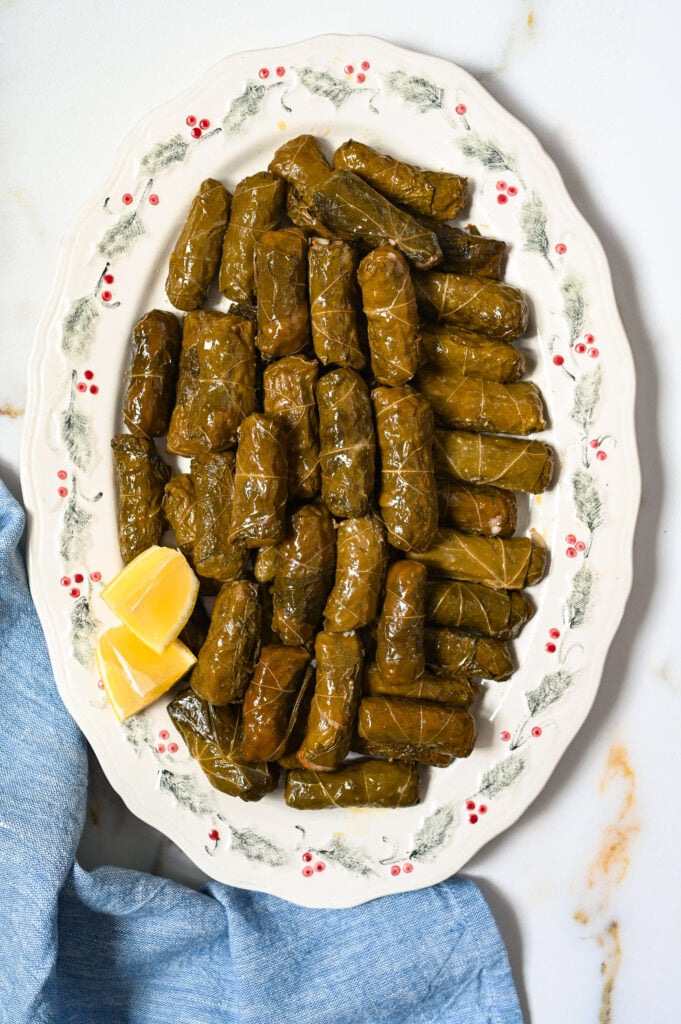
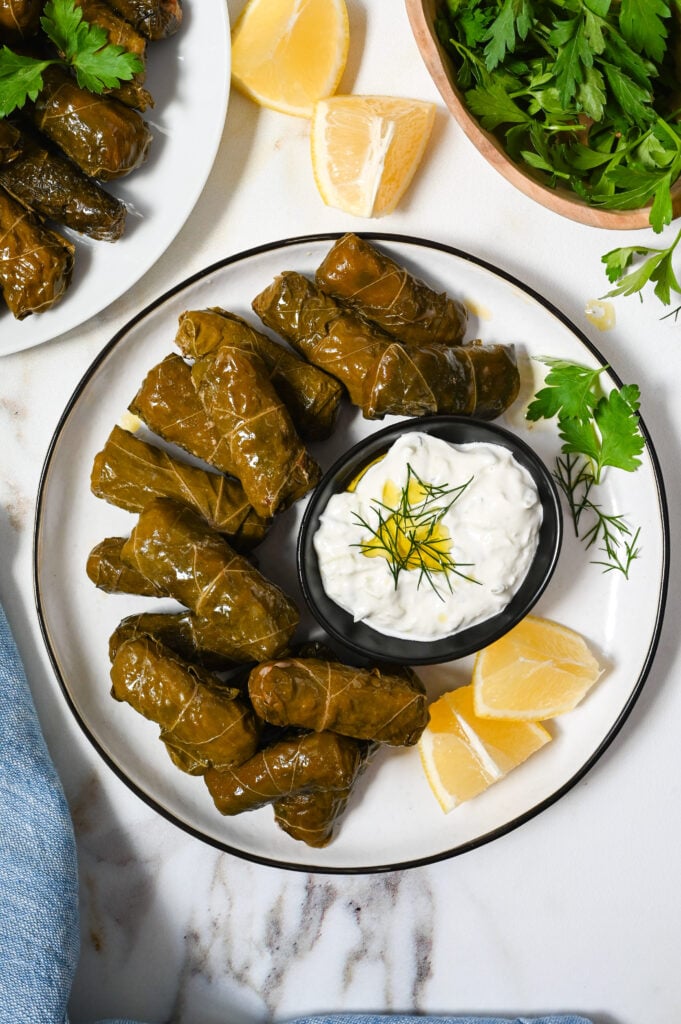
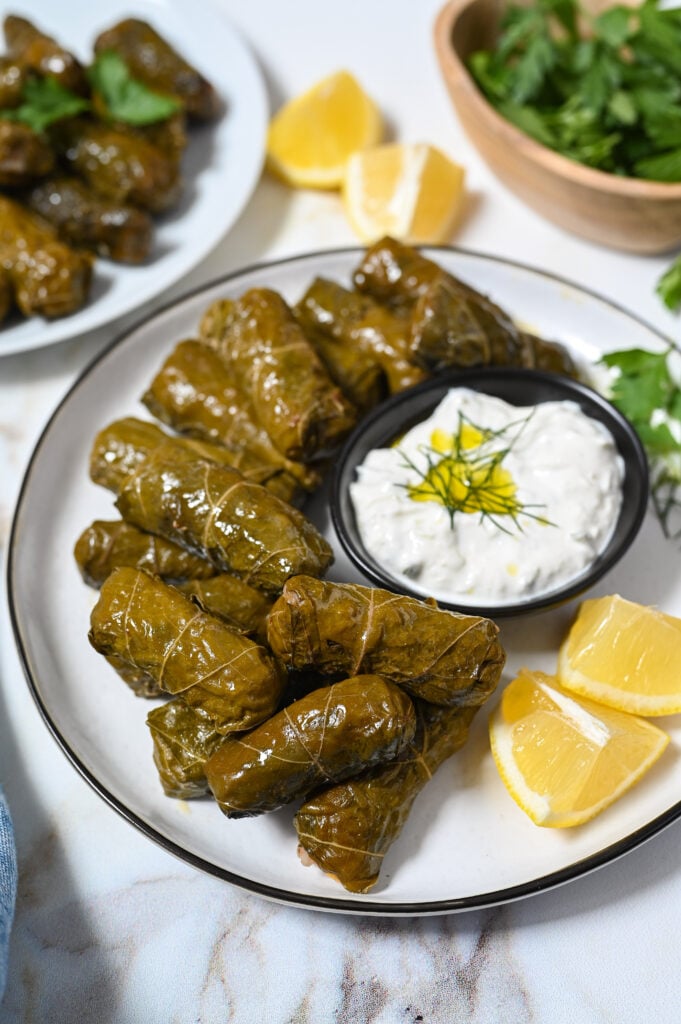
Helpful hints
In order to make dolmades you must have on hand vine or grape leaves. If you are lucky enough to find these fresh, go ahead and pick them. The leaves must be tender and soft; usually they are a pale green colour when they are. Leaves which are tough, thick and perhaps a darker green, are not the best for dolmades. If you cannot find fresh vine/grape leaves, you can usually find them sold in brine at Mediterranean or Middle eastern grocers.
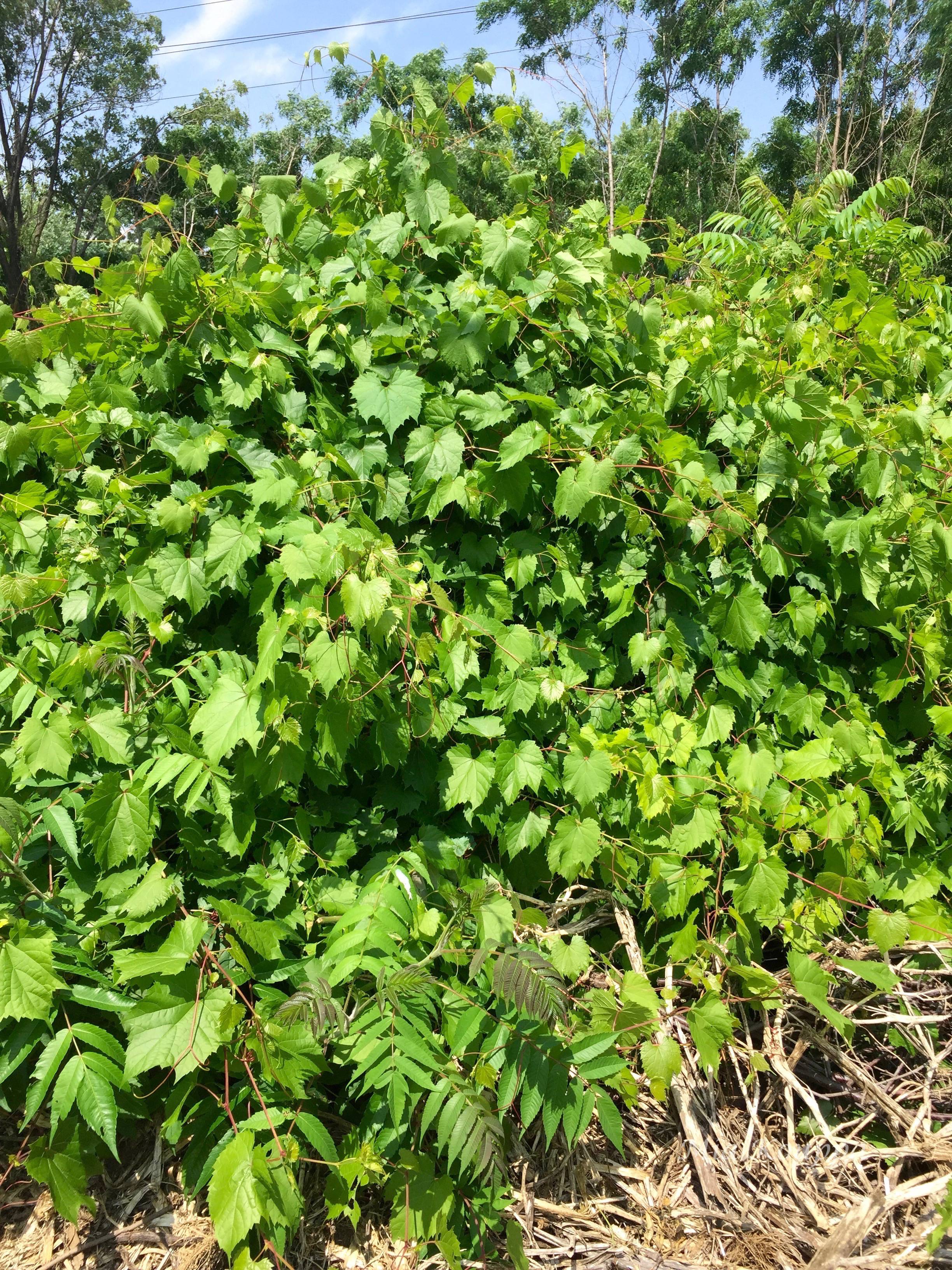
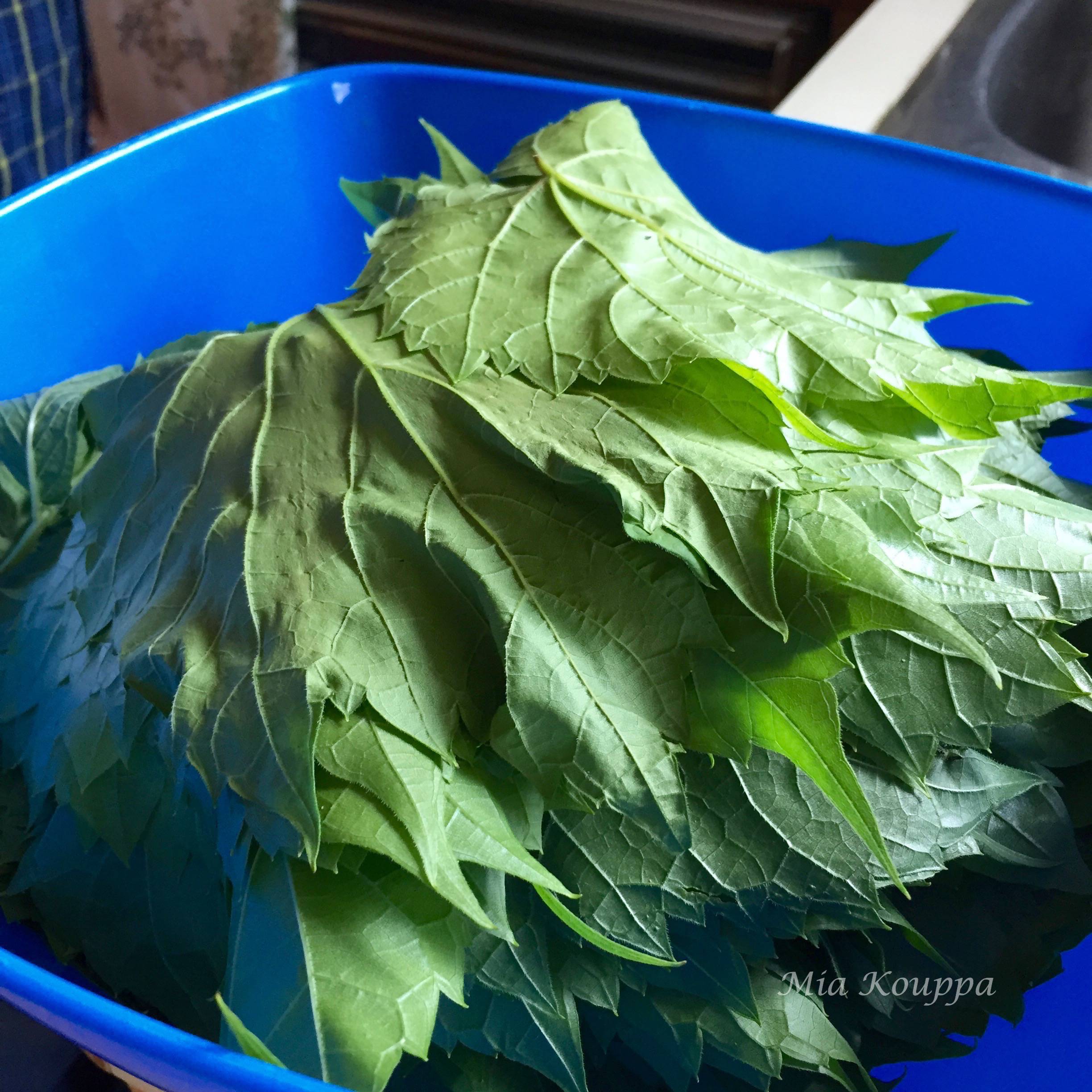
If you are fortunate enough to find fresh leaves, pick as many as you can…more than you might need in the moment. Once they are cleaned and blanched you can wrap them tightly and freeze them as our parents do. In this way you will be able to enjoy dolmades any time of year.
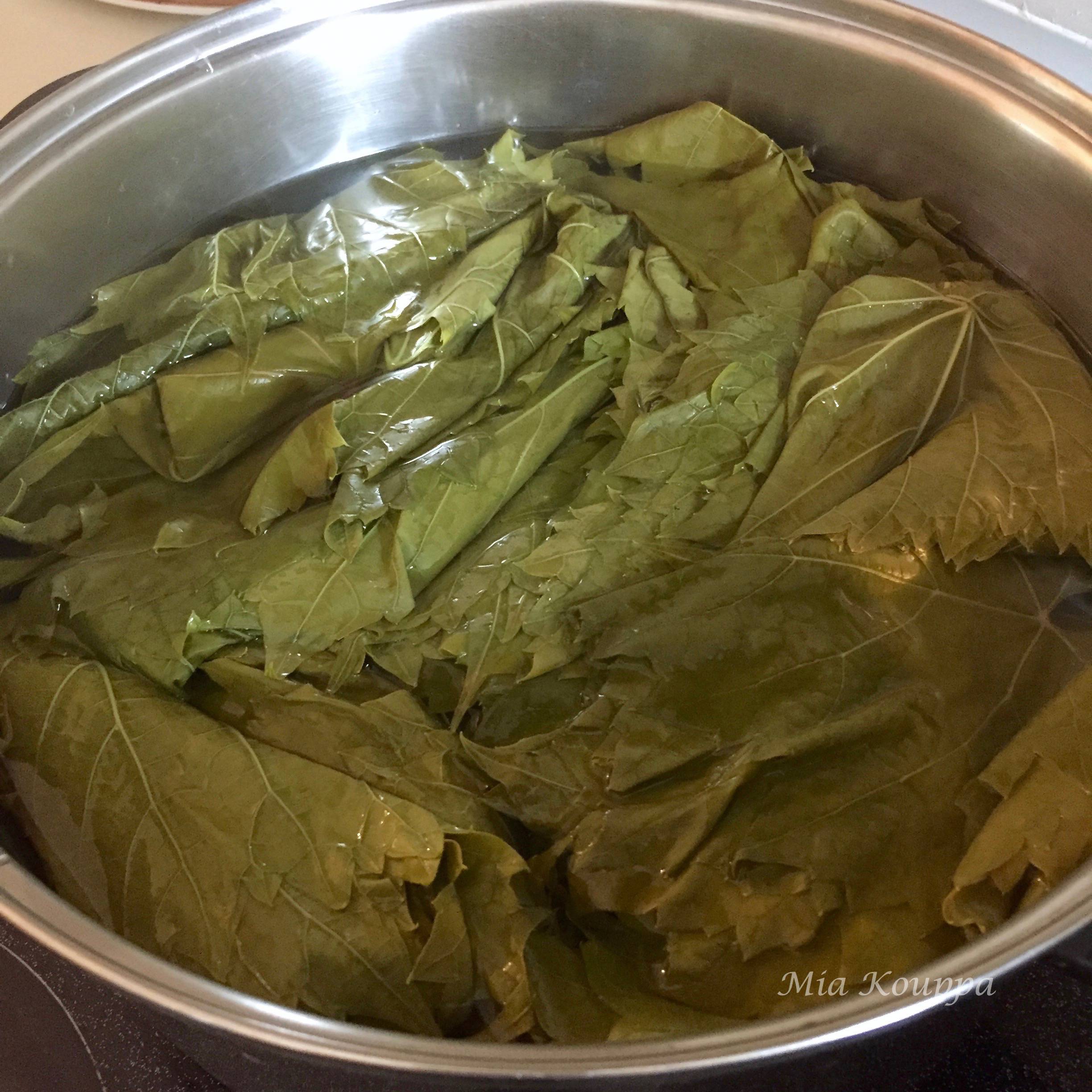
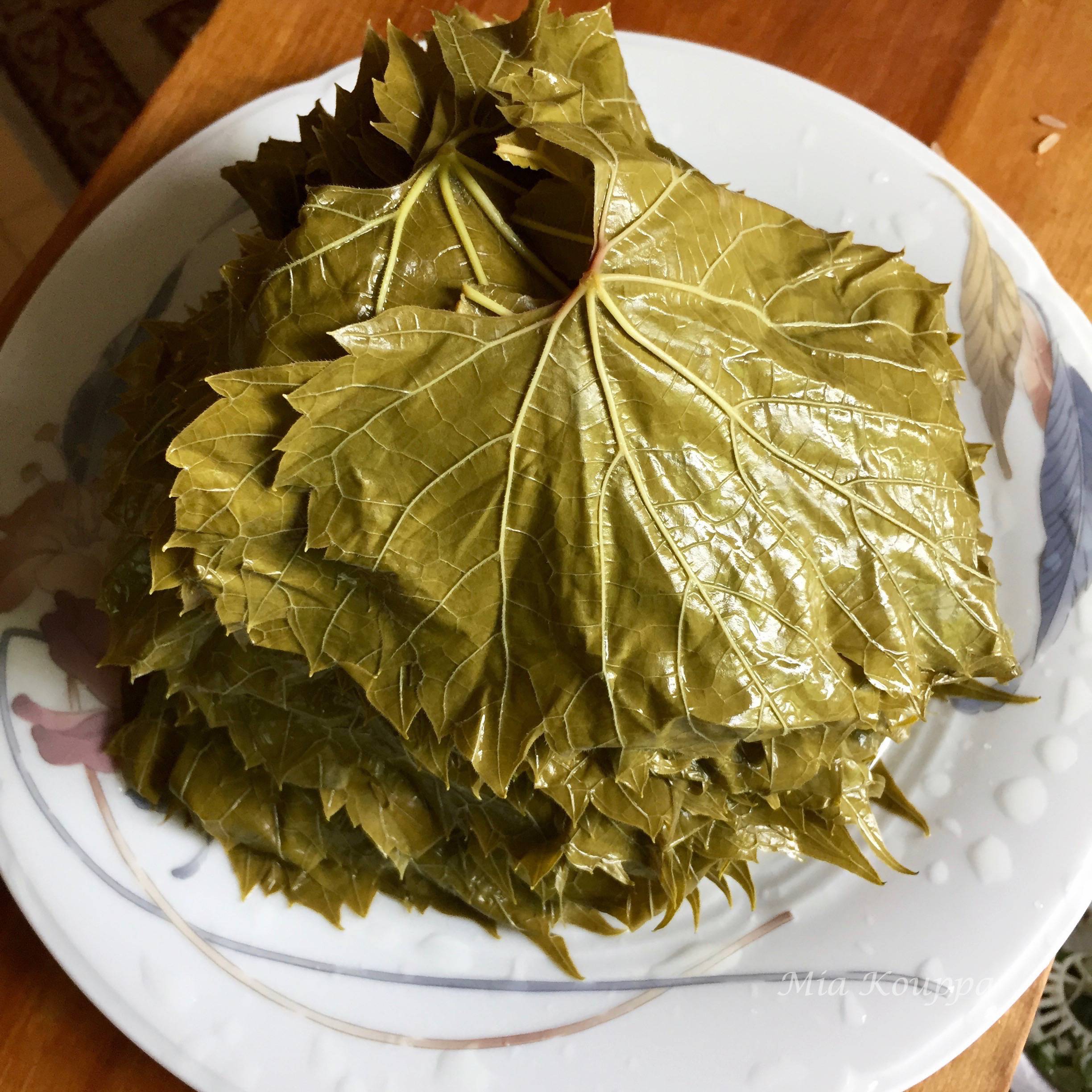
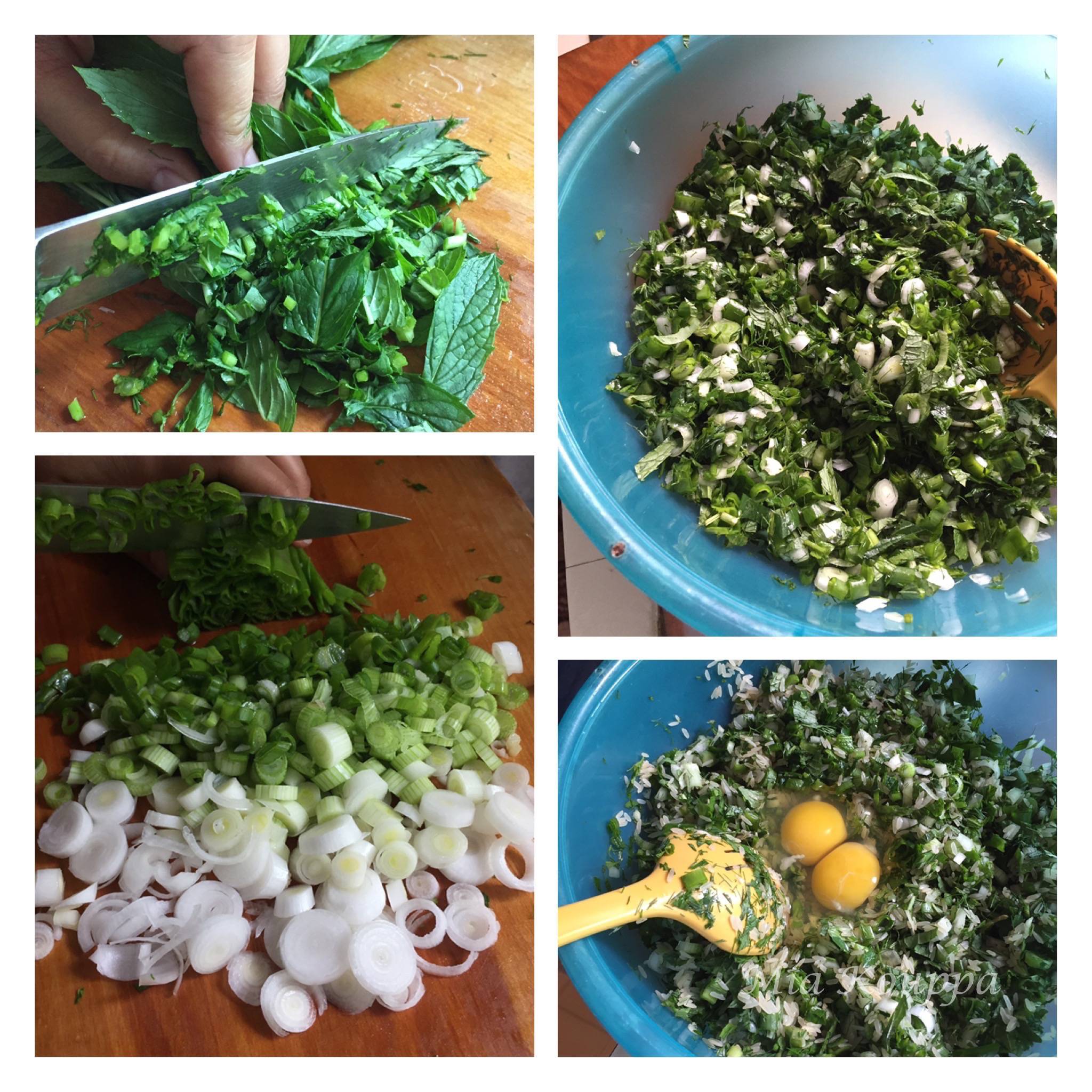
To freeze vine / grape leaves:
Wash the leaves well in cool running water. Bring a large pot of water to a boil and add the leaves for approximately 1 – 2 minutes, until they change colour and become an olive green or khaki colour. Remove from boiling water and plunge into cold water to stop them from cooking. When cooled, drain them. Arrange the leaves in portions of about 75 – 100, one on top of the other. Roll them into a cigar shape and wrap tightly with plastic wrap. Place in a freezer bag. When you are ready to use the vine / grape leaves, defrost them overnight in the refrigerator.
Select the pot that you will use to cook your dolmades in, and then find a heat-proof plate that is slightly smaller than the circumference of your pot. Once your pot is full of dolmades and you cover them with boiled water, you will have to use that plate to cover your dolmades (the plate will sit directly on them). You will then cover the pot with its proper lid. The plate will keep the dolmades snug and secure, and will prevent them from bouncing around as they cook, which will limit any breakage.
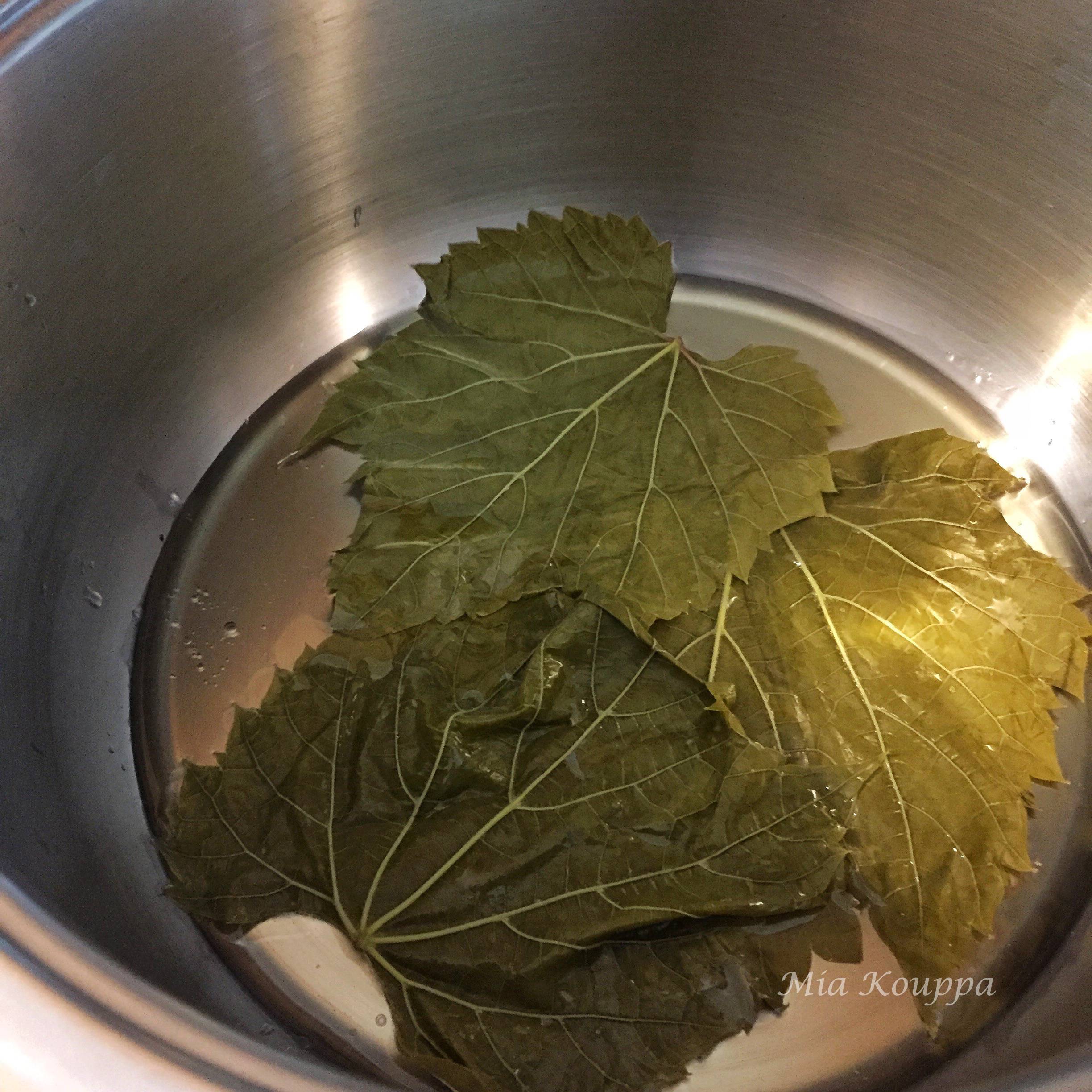
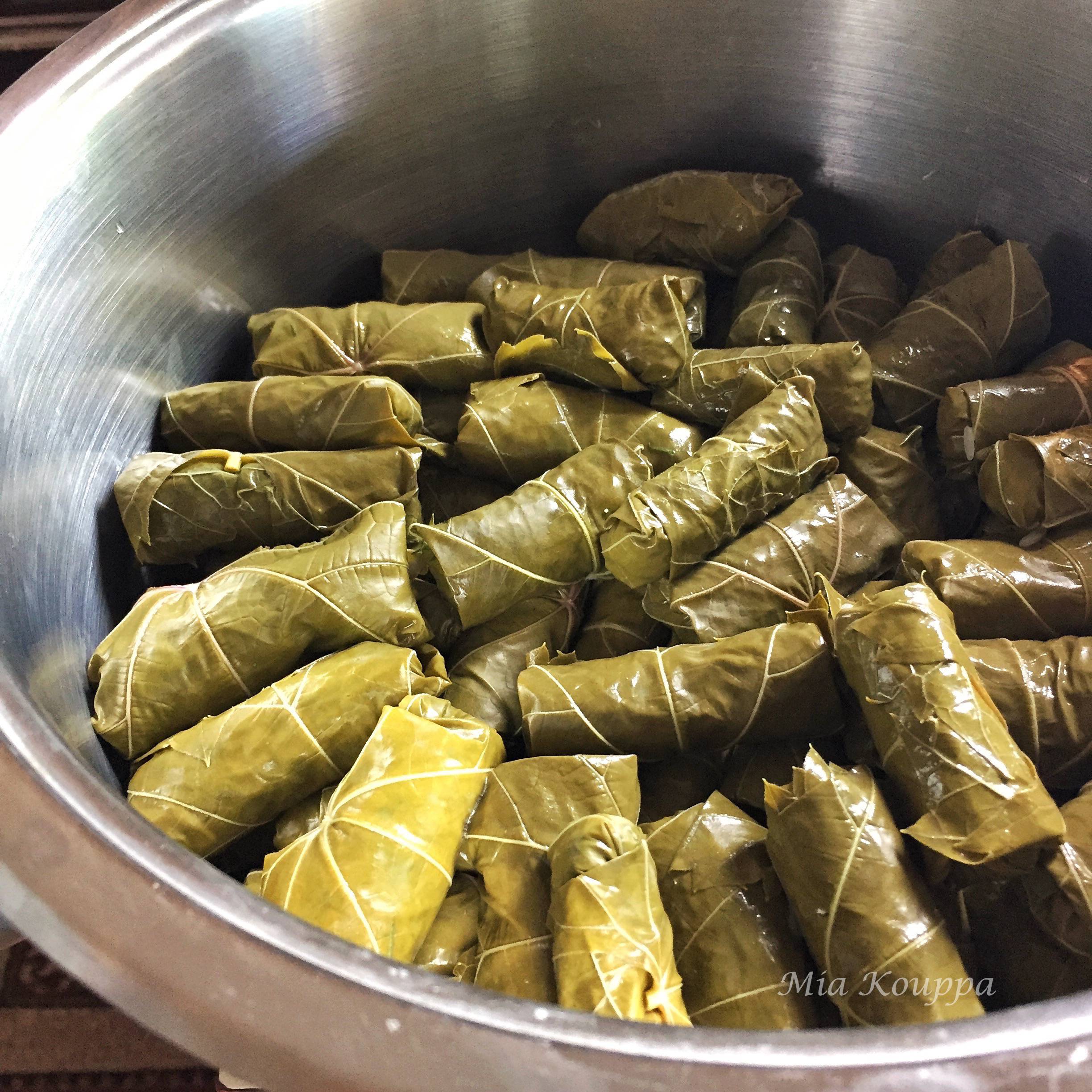
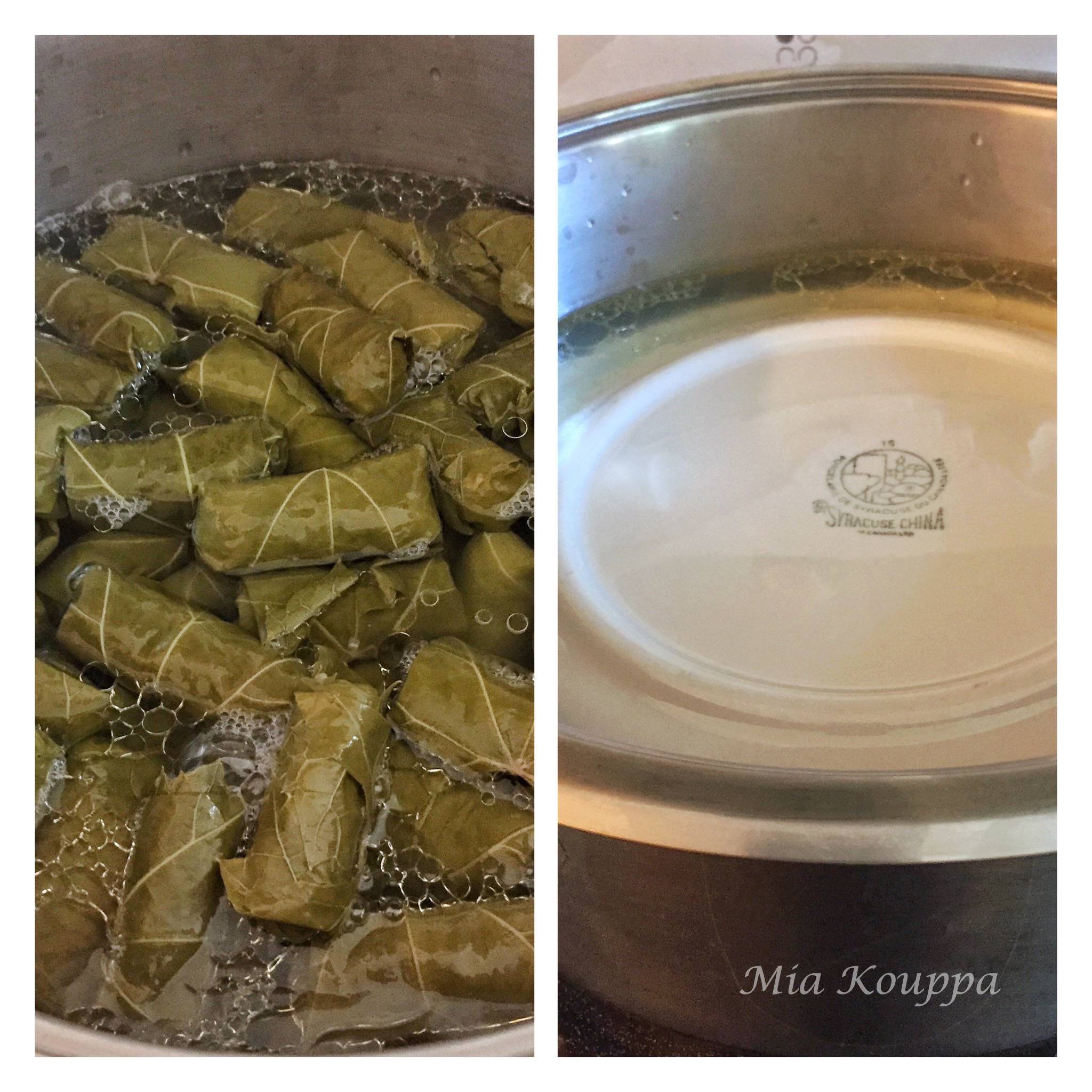
Wrapping dolmades takes a bit of practice. Within the recipe below you will find step by step instructions. It is important to note that they need to be wrapped tighter than lahanodolmades (Greek cabbage rolls). Well wrapped dolmades, once cooked, will be taut, allowing the vine leaves to securely and firmly hold in the rice filling. Remember that these are usually eaten by hand as mezedes. They are also often dipped into tzatziki (yum!) so… loosely packed dolmades run the risk of opening under all this action, and thereby spilling their contents everywhere.
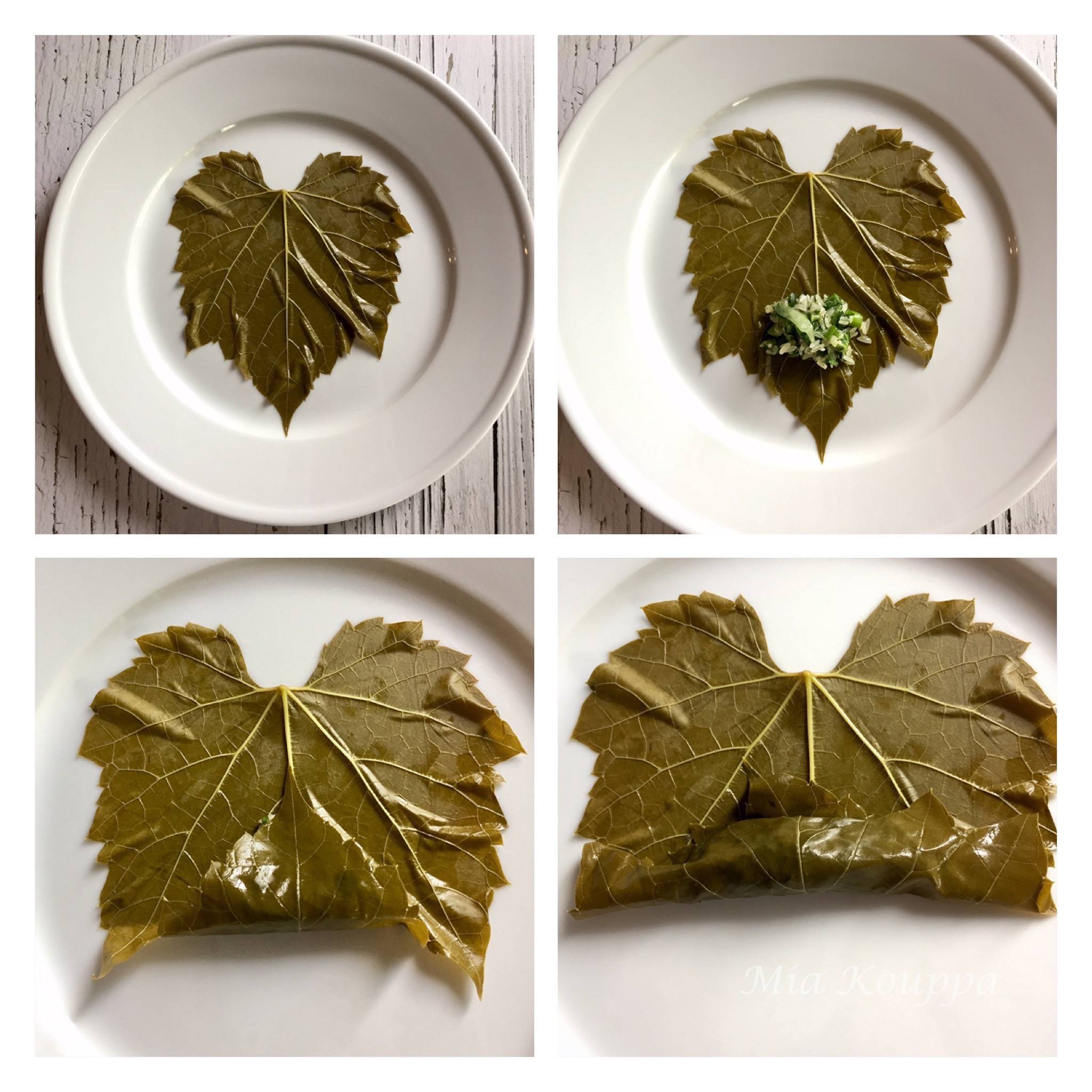
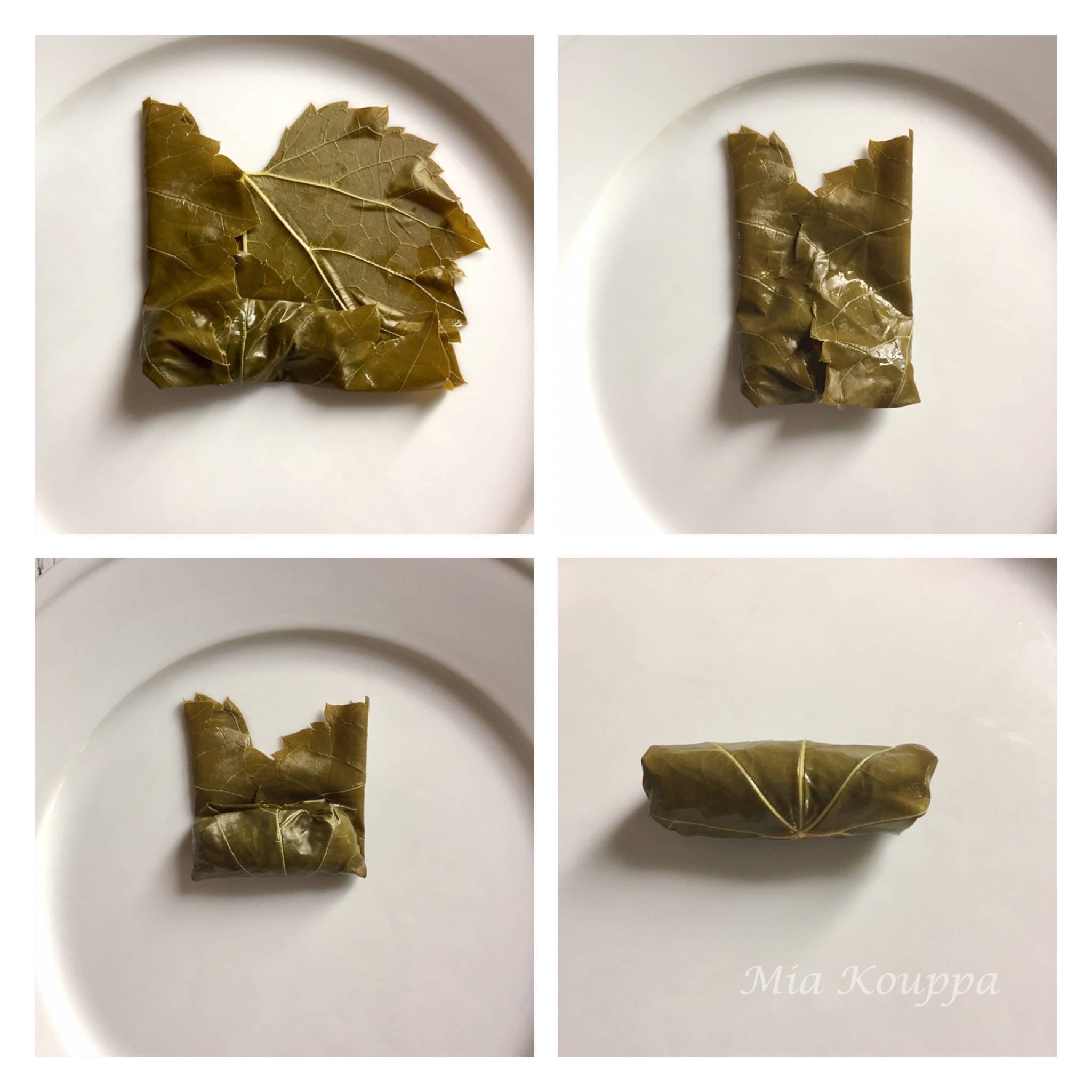
Some people like to serve their dolmades with an egg lemon (or avgolemono) sauce. This is another way to enjoy this classic Greek meze or small bite.
Looking for some more mezedes (appetizers)? Try these:
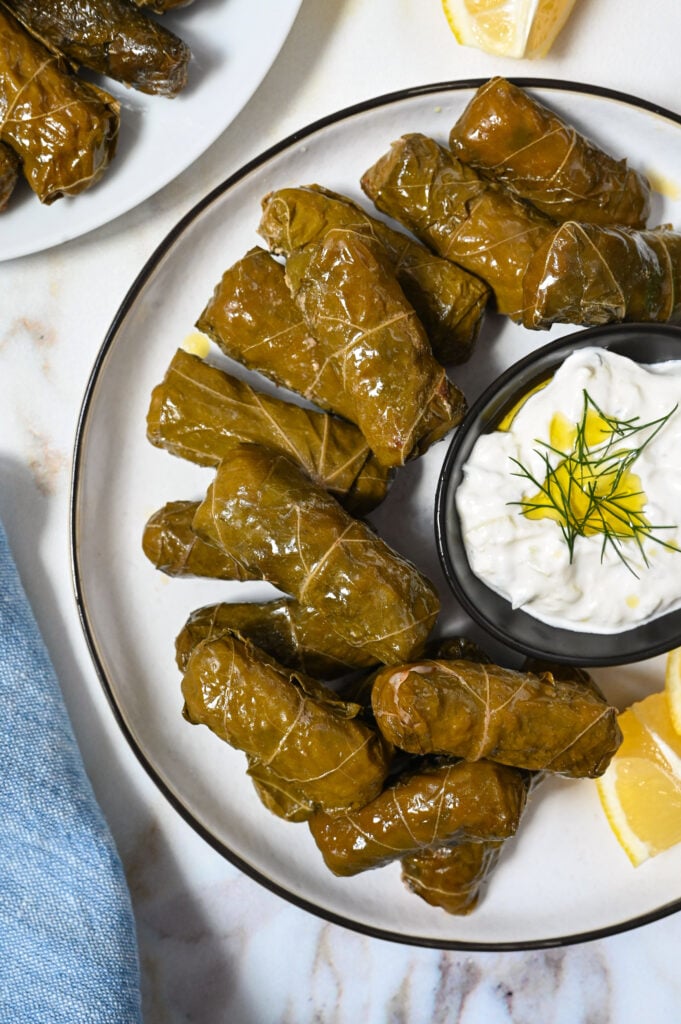
We love hearing from you! If you have made our recipes, or if you have a question or comment, or simply want to say Hi!, please leave a comment and star rating below! Also be sure to follow along with us, on Facebook, Instagram and Pinterest. We have lots of fun over there.
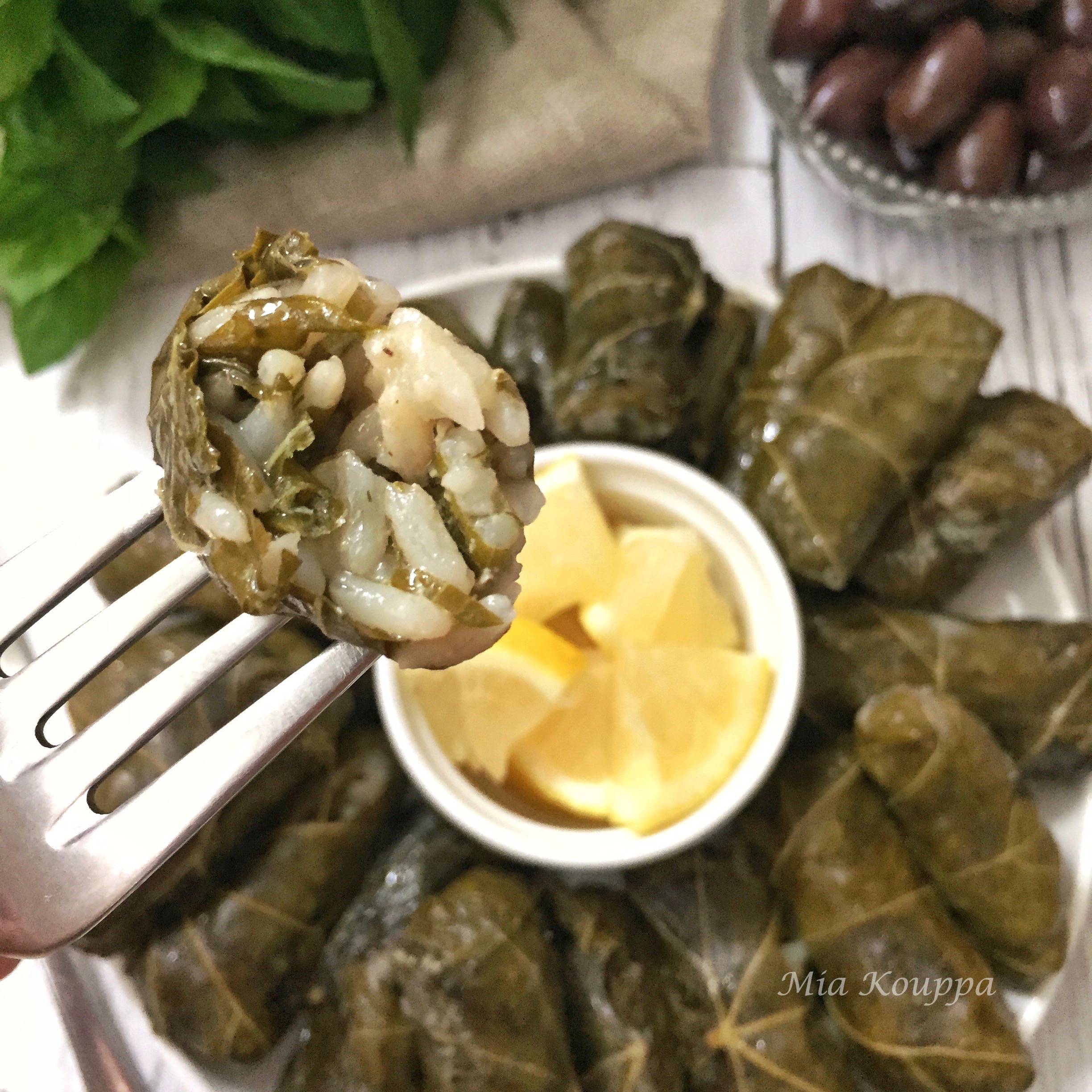
This post may contain some affiliate links, which means that we make a small commission off items you purchase at no additional cost to you.
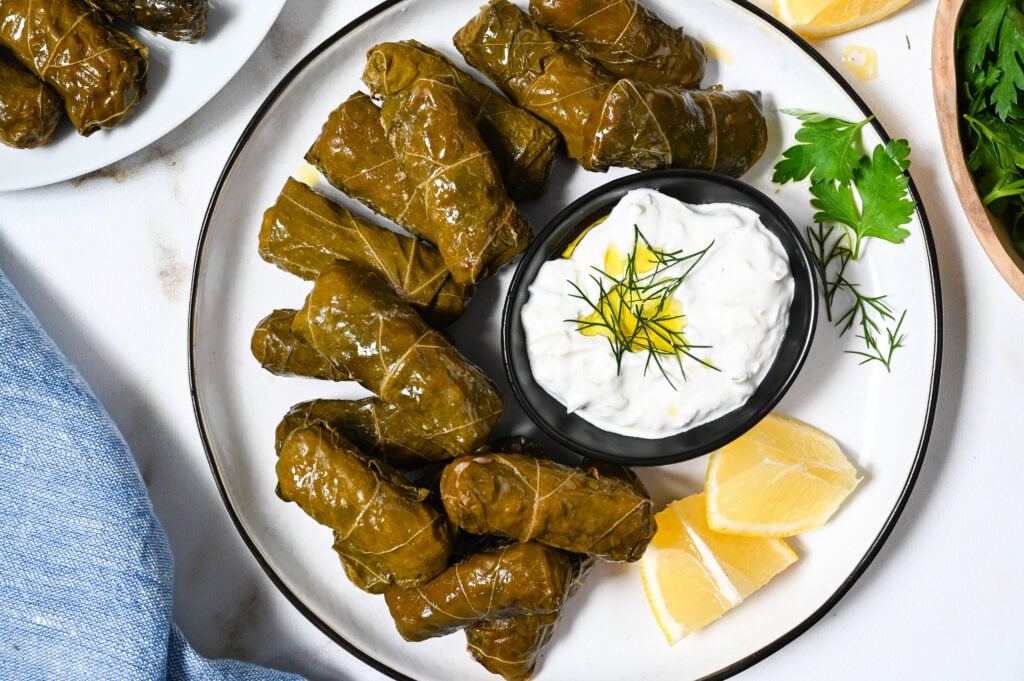
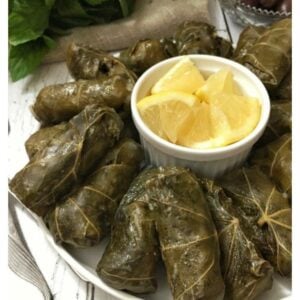
Dolmades, Greek stuffed vine leaves
Equipment
- large sauce pot
- large bowls
Ingredients
- 125 vine leaves
- 1/2 cup finely chopped dill
- 1 cup finely chopped mint
- 1/2 cup finely chopped flat leaf parsley
- 10 large spring (green) onions, finely chopped
- 1 medium yellow onion, chopped
- 2 cups (390 grams) uncooked long grain rice, rinsed
- 2 eggs optional
- 6 tbsp (90 mL) freshly squeezed lemon juice
- 1/2 teaspoon pepper
- 2 teaspoons salt
- 1/2 cup (125 mL) Greek olive oil
For cooking:
- 3 tbsp (45 mL) Greek olive oil
- 1/4 teaspoon salt
For the sauce:
- 1/4 cup (60 mL) freshly squeezed lemon juice
- 1/2 tbsp all-purpose flour
Instructions
- Prepare your vine leaves. Whether your vine leaves are fresh or brined, wash them well. Keep to the side any leaves which are severely torn.
- If you are using fresh vine leaves (as our parents do), bring a large pot of water to a boil. Once the water is boiling, add your vine leaves into the pot and boil them for about a minute or two. Your vine leaves are ready when they have changed colour from a vibrant fresh green to more of a khaki, or olive green (pictured above). Drain your vine leaves, and drop them immediately into a bowl of cold water to stop the cooking process, and to cool them. Once they have cooled, drain them in a large colander. They will likely be a jumbled up mess at this point. Take each vine leaf individually, open it up, and stack them, one on top of the other, onto a dish.
- Prepare your filling. In a large bowl combine the dill, mint, parsley, spring onions, yellow onion, rice, eggs, 6 tablespoons (90 ml) of lemon juice, 2 teaspoons salt, pepper and the 1/2 cup (125 ml) of olive oil. Mix well until thoroughly combined.1/2 cup finely chopped dill, 1 cup finely chopped mint, 1/2 cup finely chopped flat leaf parsley, 10 large spring (green) onions, finely chopped, 1 medium yellow onion, chopped, 2 cups (390 grams) uncooked long grain rice, rinsed, 2 eggs, 6 tbsp (90 mL) freshly squeezed lemon juice, 1/2 teaspoon pepper, 2 teaspoons salt, 1/2 cup (125 mL) Greek olive oil
- Now you are ready to wrap! Take your vine leaf and lay it on a plate in front of you, rib side up and with the stem end (you will have removed the stem) down toward you. Drop a teaspoonful of filling near the stem end. Begin wrapping as pictured above, first folding up, then folding in one side, and then the other. Continue this way until you have a tight, taut roll. After each one, examine it to ensure that you do not see any filling poking through. If you do, unwrap, and repeat.
- When your filling is all used up, if you still have vine leaves left over, you can freeze them for future use by rolling them tightly together and wrapping them in plastic wrap (see Helpful Hints above). Place them in a freezer bag and when you are ready to use them, defrost them overnight in the refrigerator.
- Take a pot which is large enough to hold your dolmades. Add 3 tablespoons olive oil to the bottom of the pot and line it with vine leaves (if you have any which are torn, this is a good place to use them).3 tbsp (45 mL) Greek olive oil
- Place your dolmades in the pot, arranging them so that they are snug. You will layer them one on top of the other. Sprinkle with 1/4 teaspoon salt.1/4 teaspoon salt
- Boil enough water in a separate pot or kettle. As soon as the water has boiled, pour it into your pot with the dolmades. You will need enough boiling water so that the dolmades are completely, and just barely, covered.
- Take a heat-proof plate, which is slightly smaller than the circumference of your pot, and lay the plate on top of the dolmades. Cover the pot with a lid and bring to a boil. When the water has come to a boil, lower the heat to a medium low and cook for approximately 1 hour and 15 minutes.
- Periodically check on your dolmades to ensure that they are still covered with water. If they are not, boil some more water in a kettle, and add to the pot to cover the dolmades.
- Check your dolmades for doneness by tasting them. They are ready when the rice is cooked.
- Remove from heat. In a small bowl mix together 1/4 cup (60 ml) freshly squeezed lemon juice and 1/2 tablespoon flour. Mix with about 1/2 cup (125 ml) water from the pot. Mix well until not lumpy, and pour this over the dolmades. Gently shake the pot so that the lemon mixture coats all the dolmades.1/4 cup (60 mL) freshly squeezed lemon juice, 1/2 tbsp all-purpose flour
- Dolmades are best served at room temperature. Serve with lemon wedges.
- Enjoy!

I can’t tell you how much I love this post. My husband and I had the most delicious dolmades in Athens after an energetic morning spent climbing the Acropolis. We were so hungry and it seemed at the time that it was the most wonderful thing I’d ever eaten. Your post has taken me right back there. I really want to have a go at making them myself now.
We are thrilled that this recipe brought back fond memories 🙂 Thank you for sharing that with us! We do hope that you will give these dolmades a try. Once you get the hang of wrapping them, it is actually a pretty easy dish to prepare. Keep us posted! 🙂
Impressive dolmathes! I’ve never made them with fresh leaves so that’s a culinary goal for me.
If you can find the fresh leaves…fantastic! And if you do, pick as many as you can. They freeze really well if you follow the directions in the post. Keep us posted! 🙂
Great-Can you give recipe with DOLMADES with” meat and rice” added to the filling ? Plus- the “Lemon Chicken Broth SOUP Sauce” that can be added once Dolmades are done at the end of the cooking process ?
Hi Jim! Thanks for your interest in Mia Kouppa. We will definitely be sharing dolmades with a meat and rice filling in the future. In the meanwhile, perhaps you would like to check out our recipe for Cabbage rolls; they have meat in them and they are really delicious. Not the same as dolmades of course, but sort of 🙂 As for the Lemon Chicken Broth Soup sauce…do you mean the Avgolemono soup? If so, you will find that recipe in our section for soups. Hope this helps! Thanks again for stopping by!
Just curious … we LOVE dolmades and these sound amazing! But we (two) can’t eat 100!!! Would this recipe easily reduce (1/4) or will they freeze (doesn’t sound like a good thing). : (
Any suggestions AND waiting for the meat version as well…
Thanks so much! LOVE YOU SITE!
Hi Deb. Thank you so much for your message, and for your kind words and support of Mia Kouppa. Yes, 100 dolmades are a lot for 2 people. You can VERY easily reduce the ingredients to 1/4. We would use 1 egg; this will be fine even though you would then only be halving the quantity of eggs but using a quarter of everything else. We would love to hear how you enjoy them! Have a great day 🙂
Hi Mia Kouppa, love all your recipes. Can I prepare the dolmades and freeze instead of cooking? If it is possible, what would then be the cooking instructions if frozen. Thanks so much
Hi Connie! We usually freeze dolmades after they have been cooked. We allow to thaw in the refrigerator, and then to reheat we either place them in the oven at a low temperature for a bit, put in microwave, or in a pot on top of the stove with a bit of water. Hope that help! Helen & Billie
Hello! I’ve been making Dolmathes for years now and most of the time I have extra mix, which I’ve incorporated into a stuffed chicken dish 🙂
But is it ok to freeze the mix?
Love your idea for leftover mix! But yes, you can also freeze it to be used another day 🙂 Enjoy! xoxo Helen & Billie